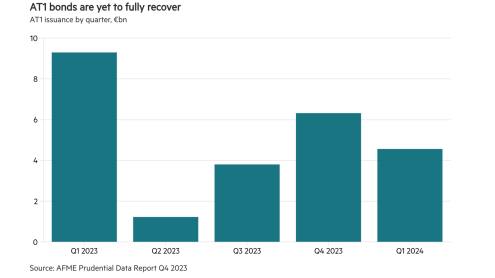In The Banker's Top 1000 Banks ranking 2013, based on end-2012 data, China’s banking assets overtook those of the US for the first time, to reach $15,700bn compared with $13,900bn in the US. Chinese pre-tax profits had already eclipsed those for US banks in the wake of the financial crisis, exceeding US bank profits by almost $36bn in 2010 (see chart).
However, while profitability in the US is recovering, there are concerns that the Chinese performance has peaked. Profits continued to rise in 2012, but the pace of asset growth has slowed. In the wake of the US financial crisis in 2008, the Chinese government stimulated the economy via an injection of capital and liquidity in the banking sector, leading to a dramatic average annual growth rate for assets of more than 45% in the five-year period from 2005 to 2010 (see chart 2).
By contrast, asset growth rates in the US banking sector have been declining steadily for the past 20 years, even during the pre-crisis financial boom. This is a reflection of the role of capital market financing in the US, which accounts for the majority of the economy’s credit supply. Banks are the main suppliers of credit in China, and this is reflected in the fact that bank assets are equivalent to a much higher proportion of gross domestic product (GDP) than in the US.
In both countries, that ratio peaked in 2010, in China’s case at a very high 220% (see chart 3). In the US, this comes as little surprise given the significant deleveraging that followed the financial crisis. In China, the strong GDP growth rate (close to 10% in real terms during 2010 and 2011, and more than 20% in nominal terms) outstripped banking sector asset growth, even with the government stimulus to bank lending.
But this is only part of the story. Trust companies, first authorised in 2004, have become an increasingly important source of credit in the Chinese economy. Together with off-balance-sheet wealth management products that were issued by banks until restrictions were introduced in 2013, this shadow banking sector has picked up the baton as the conventional banking sector slows.
A growing number of high-profile corporate defaults in 2014 on loans made by the shadow banking sector have triggered concerns about asset quality at conventional banks as well. The Banker’s Top 1000 Banks ranking 2014 will provide an indication of whether bank profitability in China will begin to slip as well.












